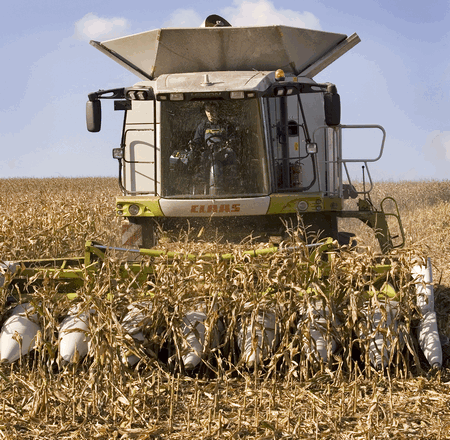Take care to avoid pollution after maize harvest

Water pollution from maize fields has become a serious problem in some river catchments and the Environment Agency is cracking down on persistent offenders.
But given this year’s extreme conditions, what can farmers really do to avoid runoff, erosion, and subsequent river pollution? A recent farm walk held by the EA, Catchment Sensitive Farming Initiative and the Maize Growers Association examined some of the options.
Solids runoff in the Axe catchment is worse than six years ago, said Dave Brogden, environment management team leader at the EA. “This is going to cause aquatic life big issues.” Not only does sedimentation destroy spawning beds for salmon, it reduces the river’s capacity, and, therefore, increases the chance of flooding, he added.
“There are benefits to maize, but there are also downsides, nearly all because of bare ground, compaction, and runoff in winter.
“A lot of the runoff is preventable. This is not just a local issue, it is a national issue and there are measures by which you don’t lose your soil or your nutrients,” he said. “We need to balance yield and the environment – if farmers are doing their best and talking to us, then fine. If not, enforcement action may be taken.”

The main problem causing runoff and soil erosion is compaction, said the EA’s Richard Smith. “Compacted soil is bad for both the crop and the environment.” However, with this year’s wet summer, it may be difficult to avoid damaging soil during harvest, so further fieldwork may be essential to prevent soil erosion over winter.
“Dig a hole, and decide whether you have got a problem,” said Mr Smith. Soils should have a loose texture, not solid, angular blocks and even the subsoil should be easy to break apart.
Producers should subsoil, plough, or chisel plough compacted soils, even in wet conditions when necessary, he said. This created a sink for excess water, preventing it from building up speed and causing runoff and erosion. Any damage the fieldwork caused could then be rectified at a later date. At-risk fields – those on a slope near a road or river – should receive careful attention including early muck-spreading and cultivation of headlands.
Although soils were now drying out, it was worth cutting maize early if the forecast turned wet again, said Simon Draper, Maize Growers Association agronomist. That way, producers could get on with fieldwork before conditions deteriorated further.
To evaluate crop maturity, producers should pick 10 adjacent cobs in four parts of the field, and find the best average for the range. Dry matters increase at a rate of 2% per week, so it was easy to evaluate the optimum harvest date for a dry matter of 30-35%. However, when conditions dictated, harvesting at 28% dry matter was more than acceptable.
In an ideal world, farmers should choose early varieties, and drill as early as possible, to prevent fieldwork going on too late into the autumn, he said. “If you drill three weeks early, you harvest three weeks early.” The ideal drilling date is the first two weeks in April, once soil temperature has reached 8°C for a few days.
Coarse seedbeds were also beneficial, as farmers did not need to spend so much time cultivating in the spring. “There’s usually enough moisture for maize to germinate well in a rough seedbed – but if you have a dry spring, you can just roll the ground,” he added.

